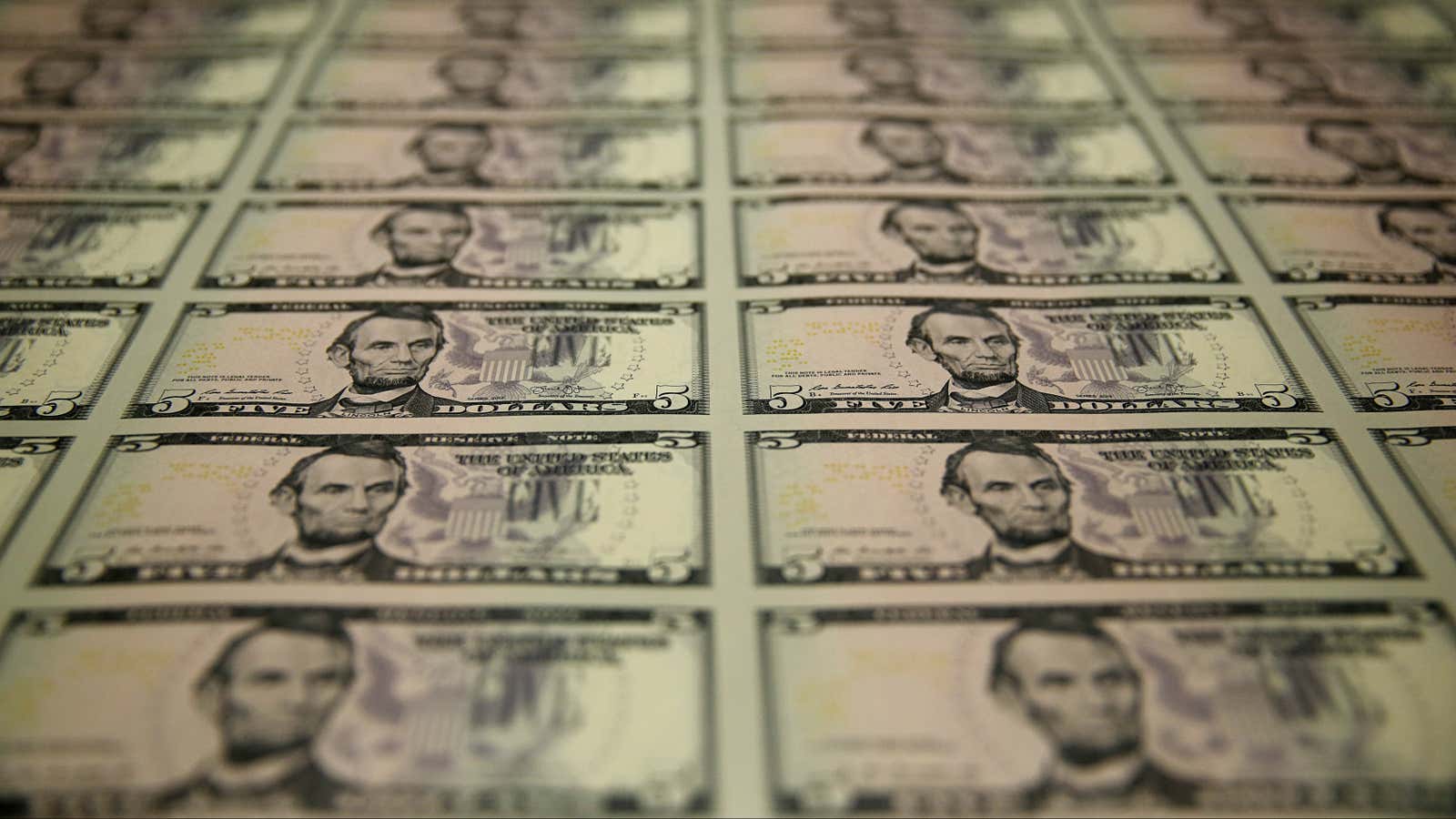New York looks set to join the list of US cities banning cashless stores. As digital payments catch on and more places sign up to measures like these, it’s worth considering what they actually accomplish.
The ban in America’s biggest city is meant to stop discrimination against customers who lack access to credit and debit cards, according to councilman Ritchie Torres, who led the bill. These well-intentioned policies are designed to look after the unbanked, as well as the elderly, poor, and other vulnerable groups that are more likely to rely on notes and coins to pay for things.
It would be deeply harmful for society if cash went away quickly. But while their usage is gradually slipping, notes and coins are far from endangered in the US. As of 2018, nearly 50% of purchases of less than $10 were still made using cash, according to a Federal Reserve survey (pdf). “Cash continues to be used extensively for small-value purchases,” the central bank wrote.
Cash isn’t going away in the US anytime soon, but it has come to represent generational, class, and racial divides. Young college-educated city dwellers are much more likely to bank on their phone and pay for things with a metal card or a $499 Apple Watch.
The parts of society that use cash the most—rural, elderly, immigrants, working class—are often those parts that have been left behind as globalism and technology have reshaped the economy. It’s hardly a surprise that Amazon Go—billionaire Jeff Bezos’ cash-less, cashier-less store—has sparked controversy.
New York’s ban has at least highlighted a critical issue: A surprisingly large number of Americans still don’t have a bank account. Around 11% of New Yorkers are bankless, and some 22% use alternatives like check cashing stores, according to the Department of Consumer Affairs. In the US overall, about 6.5% of households (pdf) didn’t have a checking or savings account in 2017.
This is a problem that hits those who can least afford it—people without formal bank accounts typically pay more to cash checks, transfer funds, or borrow money. But protecting their ability pay for things with notes and coins won’t fix this issue. A better policy could be to make sure everyone has a bank account and can pay with cash—if they choose to.
Cash hasn’t outlived its usefulness. Some people rely on physical currency for budgeting. Paper notes and coins are also the state of the art (Quartz member exclusive) when it comes to privacy, as digital payments can be exploited by hackers as well as used for surveillance by governments and tech companies.
But paper money is far from perfect. Shops that stockpile notes and coins are a target for robbery, and stacks of paper notes are used to fund the illicit economy and to avoid paying taxes. Making sure the government receives what it’s owed by taxpayers helps provide funding to look after vulnerable parts of society.
The New York bill, meanwhile, will fine stores that don’t accept cash ($1,000 for a first violation and $1,500 for each additional offense, according to the New York Times). The ban poses at least some risk that some businesses could avoid New York if they think being cashless makes better business sense for them, leading to fewer jobs for people toward the bottom of the employment ladder. (Experts who studied the UK’s decline in cash usage decided a ban on cashless stores would be hard to enforce. They determined that keeping the cash infrastructure affordable was the best way to protect its use.)
Cashless bans aren’t perfect, but they at least recognize that swaths of society can be left behind amid the shifting global economy.
“We are moving toward a cashless economy, and technology allows us to pay in very easy ways, going beyond even using credit cards or using traditional bank accounts,” said Annamaria Lusardi, a professor at George Washington School of Business. “But this is not the case for everybody, and there is a part of society, and not a small one, that prefers or is constrained to use cash.”
